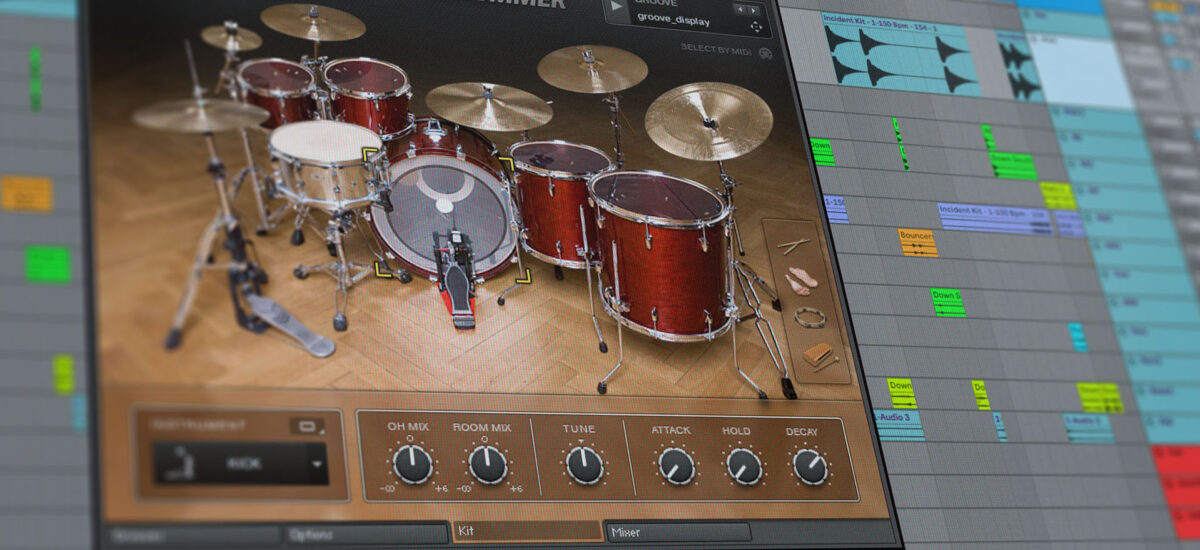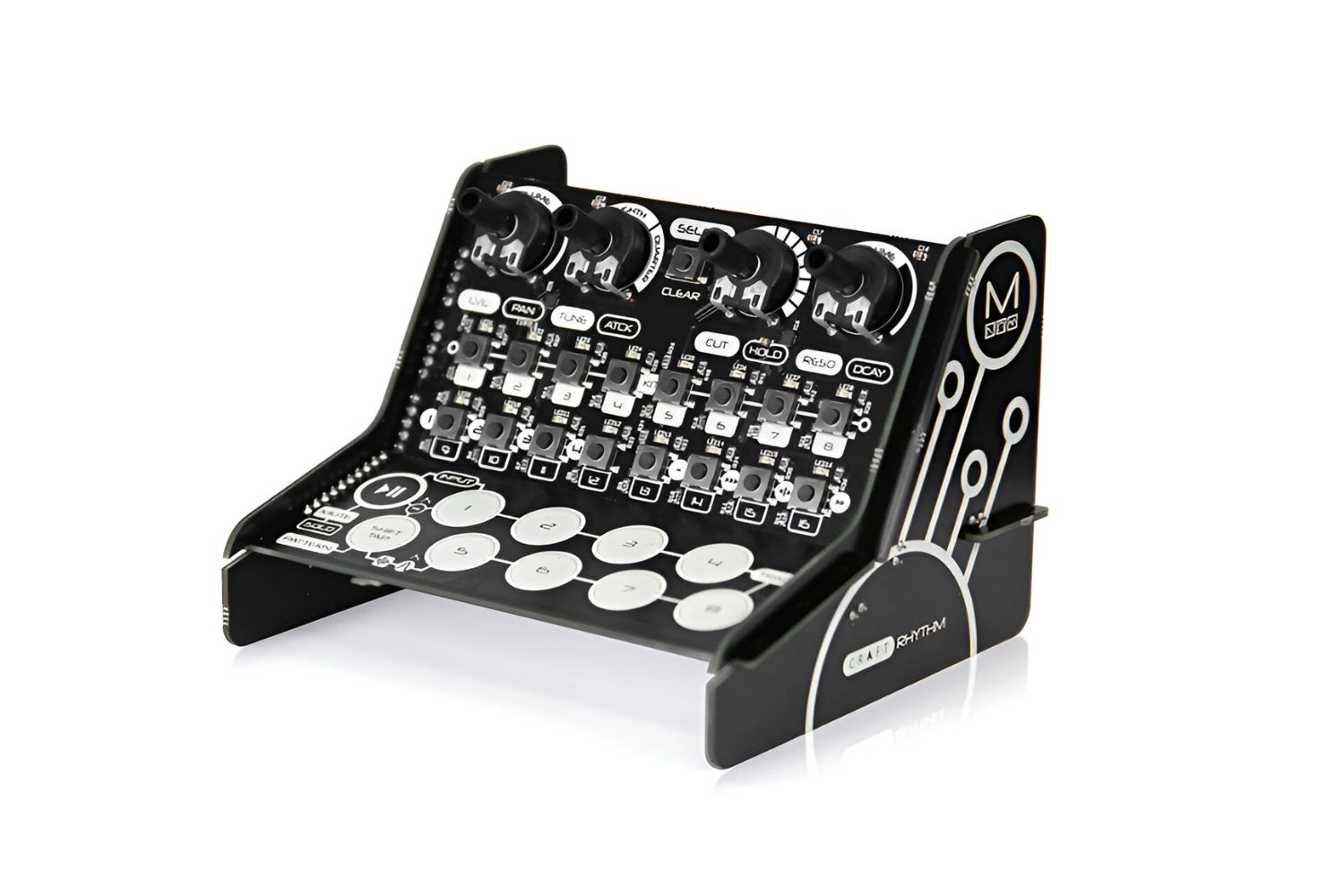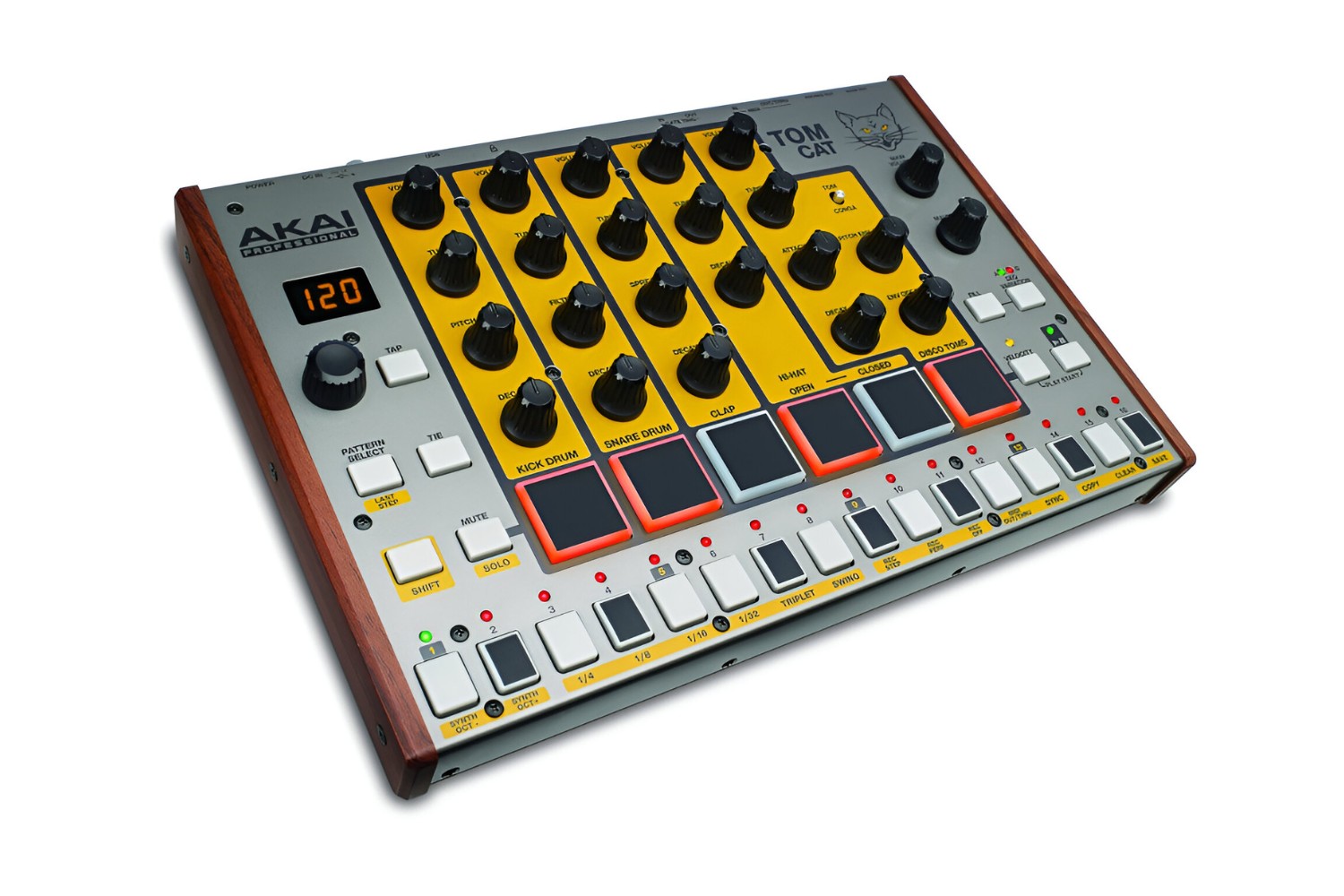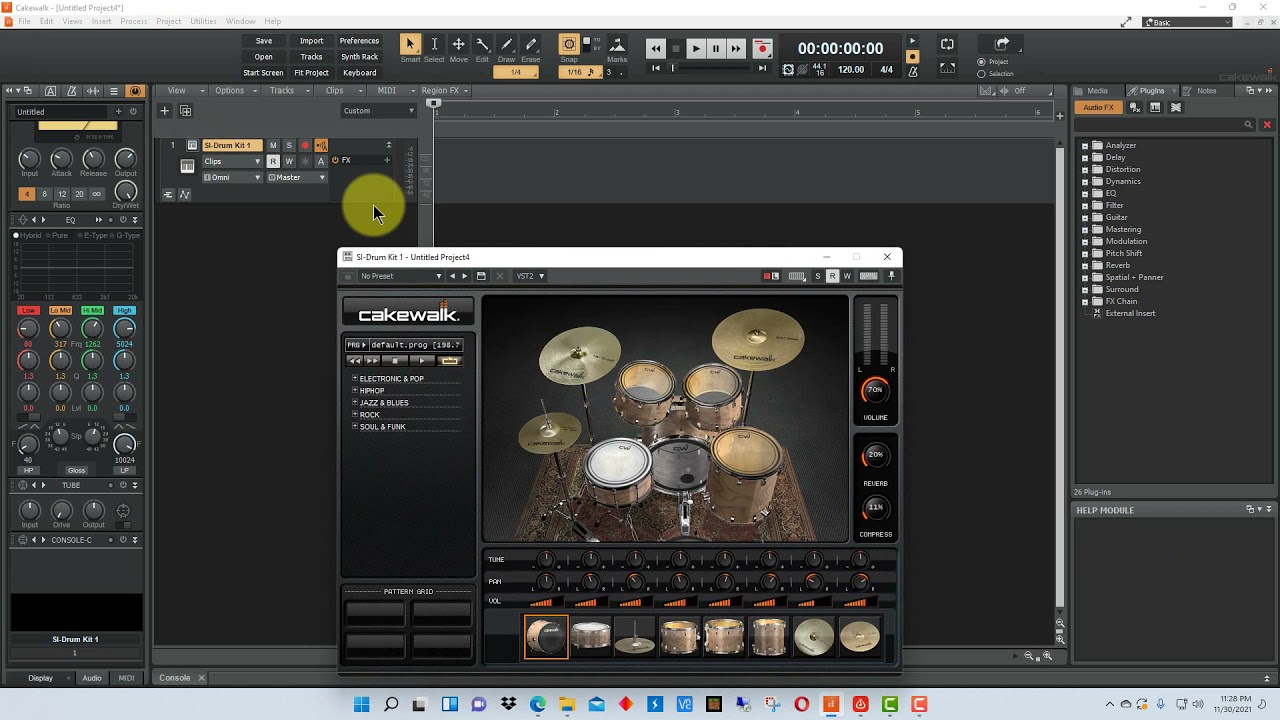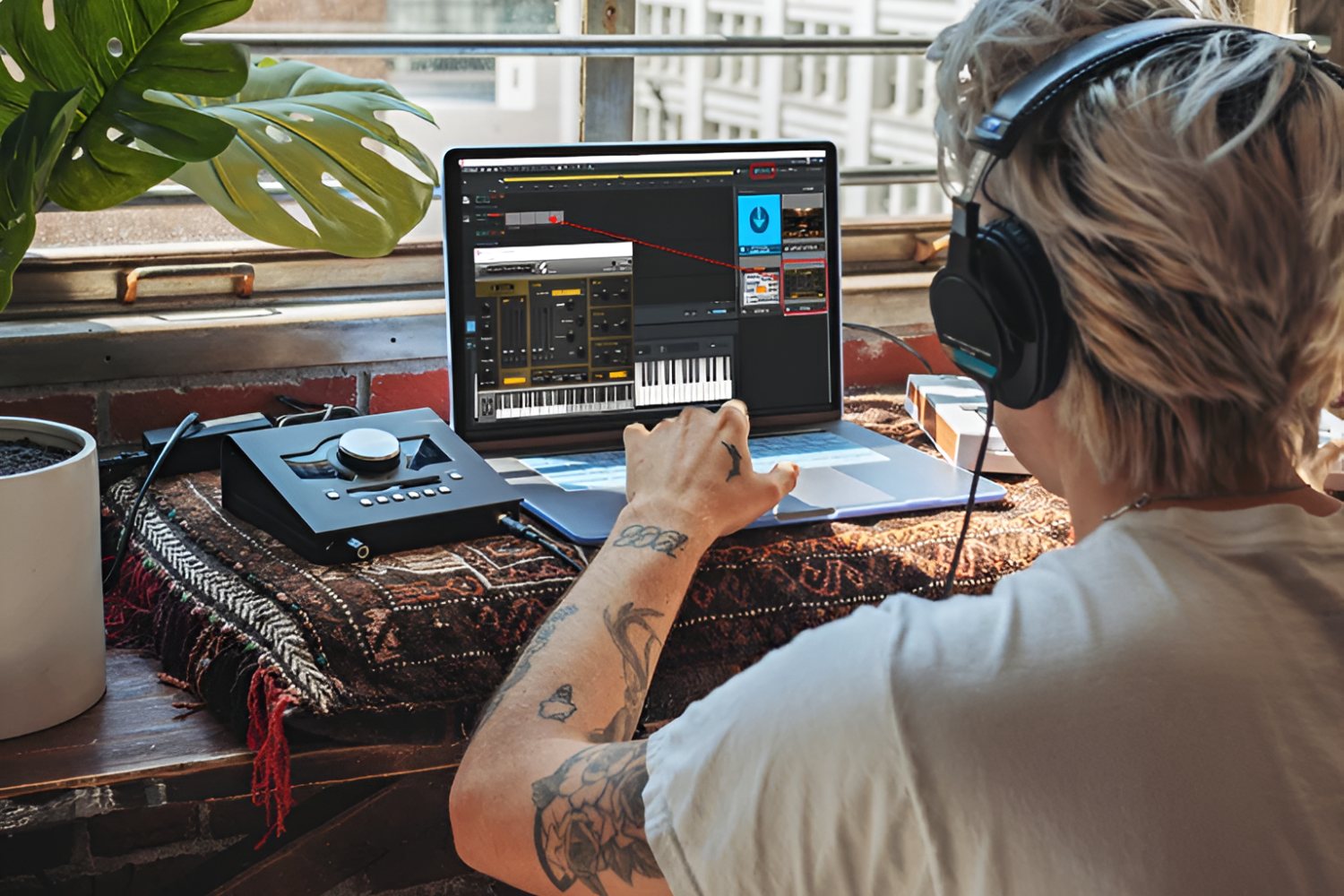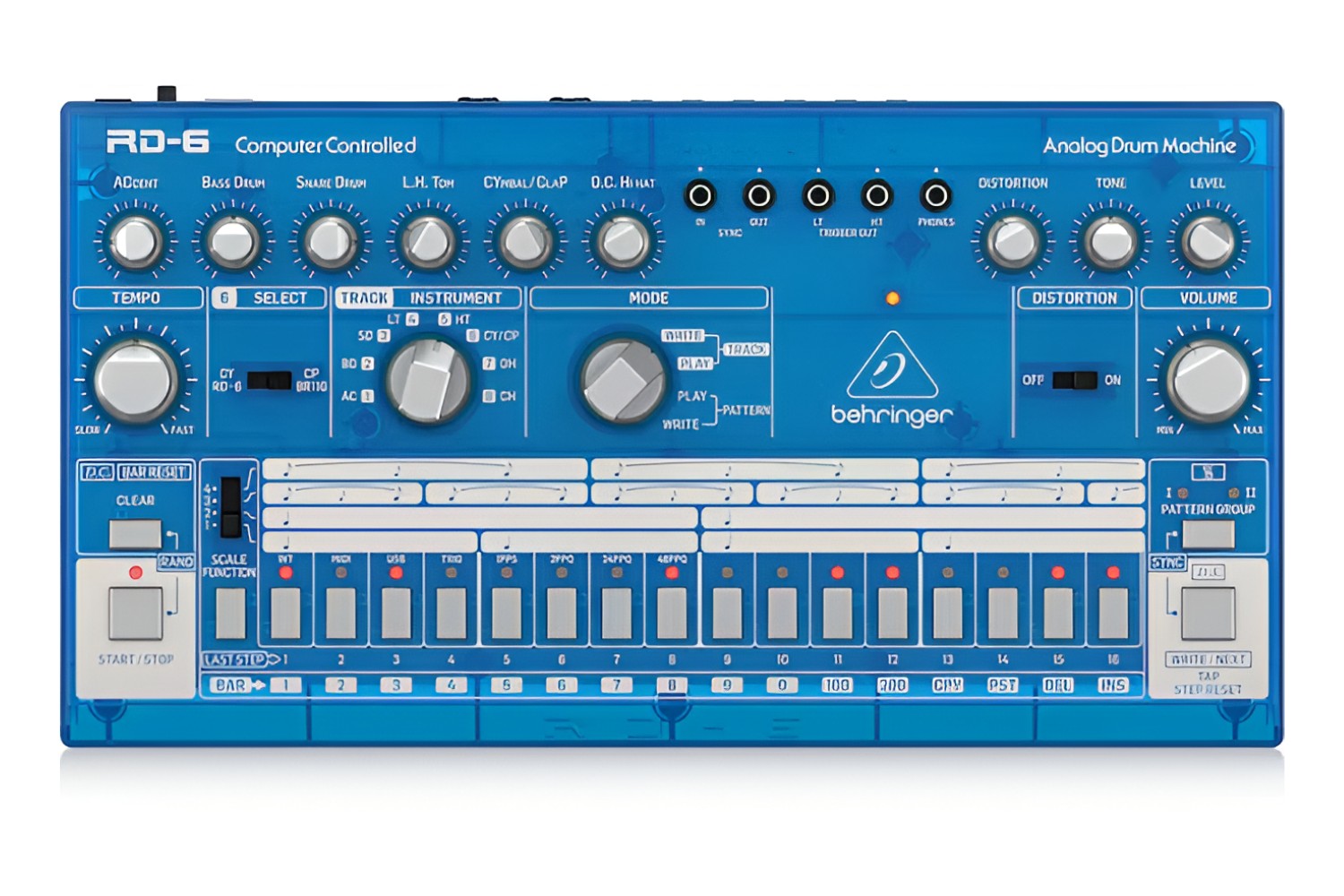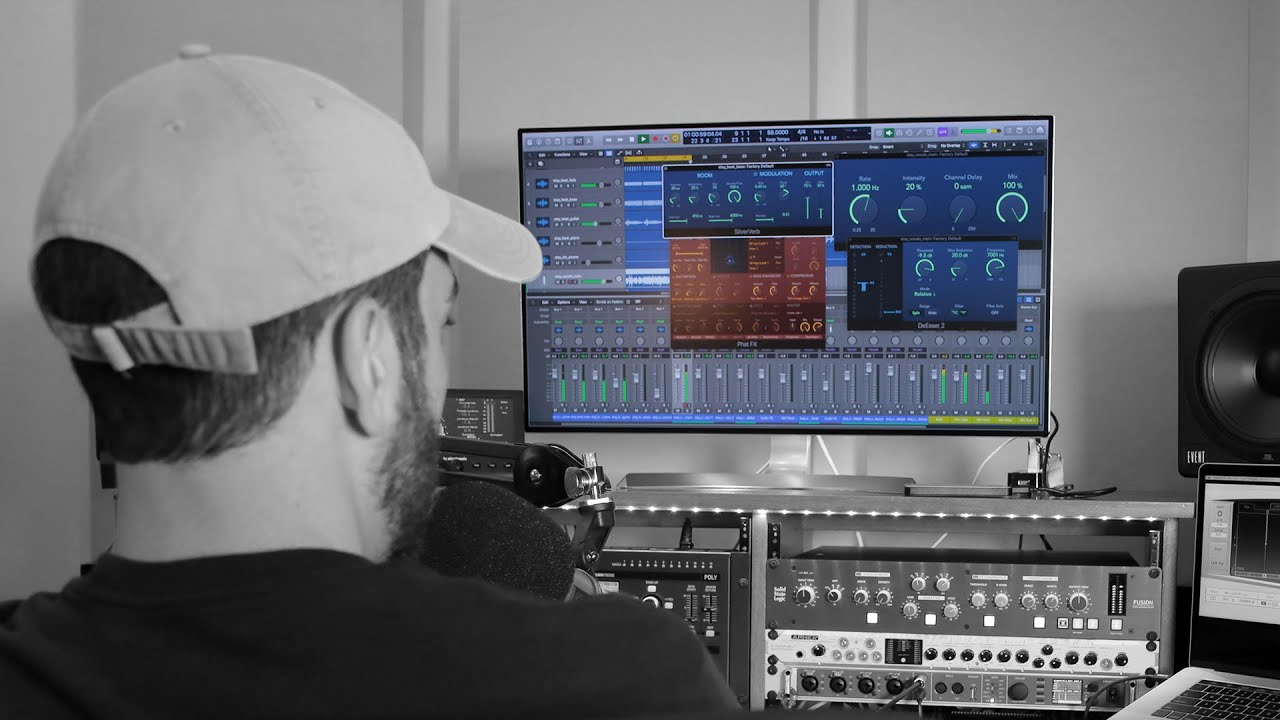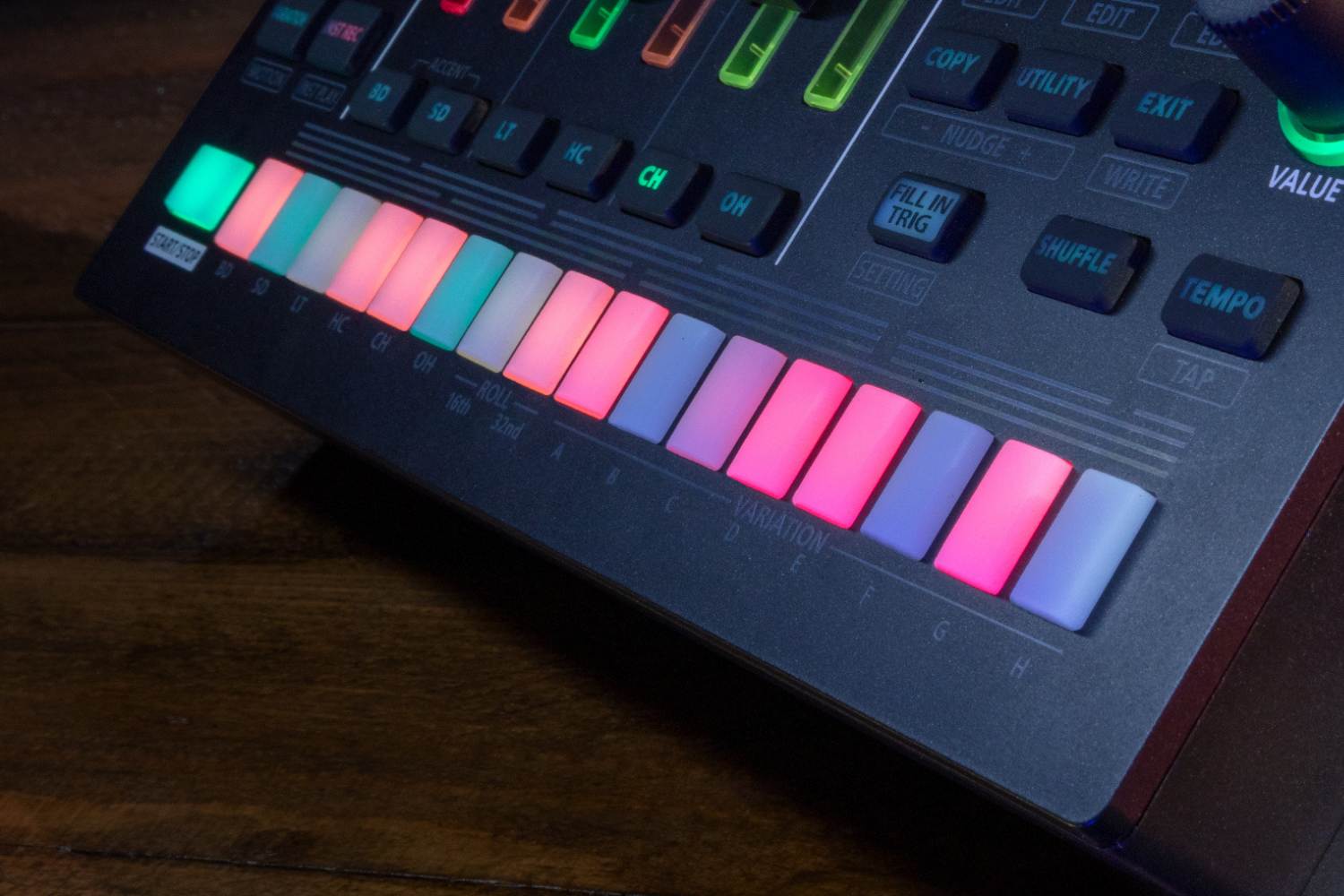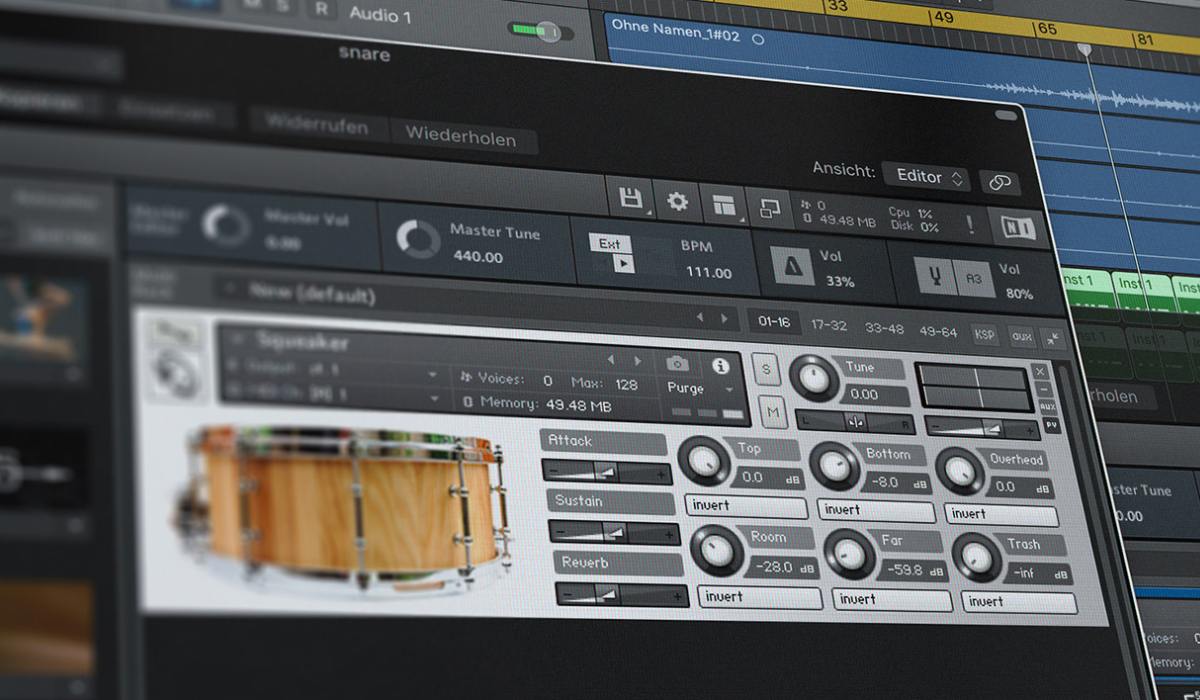Introduction
Are you ready to unlock the rhythmic potential of a drum machine? Whether you're a seasoned musician or just starting your musical journey, programming a drum machine can add a captivating layer of beats and grooves to your compositions. This article will guide you through the process of programming a drum machine, from understanding the basics to creating dynamic and compelling drum patterns.
Drum machines have been pivotal in shaping the sound of modern music, offering an array of percussive possibilities at the touch of a button. These versatile devices are capable of producing a wide range of sounds, from classic drum kit emulations to futuristic electronic beats. With the ability to program intricate rhythms and experiment with various sound effects, drum machines empower musicians to explore new sonic landscapes and elevate their music to the next level.
In this comprehensive guide, we will delve into the intricacies of drum machine programming, providing practical insights and tips to help you unleash your creativity. Whether you're interested in crafting pulsating dance grooves, laying down solid rock beats, or experimenting with experimental electronic rhythms, mastering the art of programming a drum machine will open up a world of sonic possibilities.
By the end of this article, you will have the knowledge and confidence to program your drum machine with finesse, infusing your music with infectious rhythms and captivating percussive elements. So, let's embark on this rhythmic journey and unravel the art of programming a drum machine!
Understanding Drum Machines
Before diving into the intricacies of programming a drum machine, it’s essential to grasp the fundamental workings of these electronic marvels. At its core, a drum machine is a versatile musical instrument that is designed to emulate the sounds of various percussion instruments, ranging from traditional drum kits to synthesized electronic beats.
Drum machines typically consist of a sound generator, sequencer, and a variety of controls that allow users to manipulate and arrange rhythmic patterns. The sound generator produces a diverse array of percussive sounds, which can be customized and combined to create unique and dynamic drum patterns. The sequencer serves as the brain of the drum machine, enabling users to program and arrange rhythmic sequences with precision and flexibility.
One of the defining features of modern drum machines is their ability to emulate the nuances and characteristics of acoustic drum kits, providing an authentic and expressive drumming experience. Additionally, many drum machines offer an extensive library of electronic and synthesized sounds, allowing musicians to explore futuristic and experimental sonic textures.
Understanding the interface and controls of a drum machine is crucial for harnessing its full potential. From adjusting individual sound parameters to creating intricate rhythmic loops, familiarity with the various functions of a drum machine is essential for crafting compelling and dynamic drum patterns.
Furthermore, the integration of MIDI (Musical Instrument Digital Interface) capabilities in modern drum machines enables seamless connectivity with other MIDI-compatible instruments and devices, expanding the creative possibilities for music production and live performances.
By comprehending the inner workings and capabilities of drum machines, you’ll be well-equipped to harness their creative potential and infuse your musical compositions with captivating rhythms and percussive flair.
Choosing the Right Drum Machine
When embarking on the journey of selecting a drum machine, it’s essential to consider a range of factors that align with your musical preferences and production requirements. The market offers a diverse array of drum machines, each with unique features and sonic capabilities, catering to various musical genres and production styles.
First and foremost, identify the sonic palette that resonates with your musical vision. Whether you’re drawn to the classic sounds of analog drum machines, the versatility of sample-based units, or the cutting-edge capabilities of modern digital drum machines, understanding the sonic characteristics and capabilities of different models is crucial for making an informed choice.
Consider the interface and workflow of the drum machine. The layout and usability of the controls, pads, and display are integral to your creative process. Some drum machines offer intuitive and hands-on interfaces, facilitating seamless programming and real-time performance, while others provide extensive parameter controls for in-depth sound manipulation and customization.
Explore the connectivity options offered by the drum machine. Whether it’s USB, MIDI, or analog sync, ensuring compatibility with your existing studio setup and instruments is essential for seamless integration and expanded creative possibilities. Additionally, some drum machines feature audio outputs for individual drum sounds, enabling flexible routing and processing within your production environment.
Delve into the built-in sound library and sound design capabilities of the drum machine. From classic drum kit emulations to electronic percussion and sound effects, a diverse and high-quality sound palette can significantly enhance your creative output. Furthermore, the ability to import and manipulate your own samples can provide a personalized sonic identity to your drum patterns.
Consider the portability and form factor of the drum machine, especially if you intend to incorporate it into live performances or mobile production setups. Compact and portable drum machines offer flexibility and convenience, allowing you to create music anytime, anywhere.
By carefully evaluating these factors and aligning them with your musical aspirations, you can choose a drum machine that not only complements your creative workflow but also inspires and empowers you to explore new rhythmic horizons in your musical journey.
Connecting and Setting Up Your Drum Machine
Once you’ve chosen the perfect drum machine to elevate your musical endeavors, it’s time to seamlessly integrate it into your setup and unleash its sonic potential. Connecting and setting up your drum machine involves a series of essential steps to ensure optimal functionality and creative freedom.
Begin by establishing the physical connections of your drum machine within your studio or performance environment. Most drum machines feature audio outputs, typically in the form of 1/4-inch jacks or balanced XLR outputs, allowing you to route the individual drum sounds to your mixer, audio interface, or sound system. Additionally, consider the MIDI connectivity options for synchronization and control with other MIDI-compatible instruments and devices.
Ensure that the power supply of the drum machine is securely connected and that it’s receiving the necessary power to operate reliably. Some drum machines are battery-powered, providing portability and flexibility for on-the-go music production and performances.
Explore the integration of your drum machine with music production software and hardware. Many modern drum machines offer USB connectivity, enabling seamless communication with digital audio workstations (DAWs) and software instruments. This integration opens up a world of possibilities, allowing you to combine the tactile experience of the drum machine with the expansive capabilities of music production software.
Familiarize yourself with the essential settings and preferences of the drum machine, including tempo, time signature, and pattern memory. Understanding these foundational aspects will facilitate a smooth and efficient workflow as you delve into programming and arranging compelling drum patterns.
Experiment with the sound outputs and routing options of the drum machine, exploring the sonic characteristics of individual drum sounds and the overall mix. Adjust the levels, panning, and effects to sculpt the perfect percussive landscape that complements your musical compositions.
By meticulously setting up and connecting your drum machine, you’ll establish a creative environment that empowers you to explore new rhythmic dimensions and infuse your music with captivating percussive elements. With the foundation laid for seamless integration, you’re poised to embark on a rhythmic journey filled with endless sonic possibilities.
Programming Basic Drum Patterns
As you acquaint yourself with the intricacies of drum machine programming, mastering basic drum patterns forms the cornerstone of your rhythmic exploration. Whether you’re aiming for pulsating dance grooves, rock-solid backbeats, or laid-back hip-hop rhythms, understanding the essentials of programming basic drum patterns is essential for laying a solid rhythmic foundation.
Begin by familiarizing yourself with the grid-based interface of the drum machine’s sequencer. This visual representation of musical time allows you to assign specific drum sounds to individual steps, creating rhythmic patterns with precision and clarity. Understanding the concept of beats, measures, and subdivisions within the sequencer grid is fundamental to crafting cohesive drum patterns.
Experiment with the classic drum pattern archetypes, such as the four-on-the-floor kick drum pattern commonly found in dance music, the syncopated and swung rhythms prevalent in jazz and funk, and the straightforward backbeat groove synonymous with rock and pop music. By deconstructing and recreating these foundational patterns, you’ll gain insight into the rhythmic nuances that define different musical styles.
Explore the role of velocity and dynamics in shaping your drum patterns. Adjusting the velocity of individual drum hits imparts a sense of expressiveness and realism to your rhythms, allowing for subtle accents and dynamic variation. This attention to detail elevates the rhythmic complexity and musicality of your drum patterns.
Consider the incorporation of drum fills and transitions within your patterns to introduce variation and momentum. By strategically placing fills, rolls, and transitional patterns, you can add excitement and anticipation to your drum sequences, creating dynamic and engaging rhythmic arrangements.
Utilize the quantization and swing parameters offered by the drum machine to refine the timing and feel of your drum patterns. Quantization aligns the rhythmic events to a specific grid, ensuring tight and precise timing, while swing introduces subtle rhythmic fluctuations, infusing your patterns with a sense of groove and human-like feel.
By mastering the art of programming basic drum patterns, you’ll lay a solid rhythmic groundwork for your musical compositions, setting the stage for further exploration and experimentation with intricate rhythms and sonic textures. With a firm grasp of these fundamental principles, you’re poised to infuse your music with infectious and compelling percussive elements.
Adding Variation and Fills
Infusing your drum patterns with variation and well-placed fills is a vital aspect of creating engaging and dynamic rhythmic sequences. By introducing subtle nuances and transitional elements, you can elevate the energy and momentum of your drum patterns, captivating the listener and enhancing the overall musical experience.
Explore the concept of pattern variation within your drum sequences. By incorporating subtle changes in drum patterns, such as altering the kick and snare placement, adding or removing percussion elements, or adjusting the rhythmic density, you can introduce compelling shifts that maintain interest and momentum throughout your compositions.
Experiment with the use of accents and ghost notes to add depth and intricacy to your drum patterns. By emphasizing certain drum hits and introducing nuanced ghost notes, you can create a sense of rhythmic interplay and complexity, enriching the overall texture of your percussive arrangements.
Delve into the art of crafting drum fills, which serve as impactful transitions between different sections of your music. Whether it’s a subtle fill leading into a chorus, an explosive fill preceding a climactic moment, or a tasteful fill bridging two contrasting sections, well-executed drum fills add drama and excitement to your compositions.
Consider the use of rhythmic displacement to introduce unexpected and compelling variations within your drum patterns. By shifting the placement of specific drum hits or entire rhythmic phrases, you can create a sense of rhythmic tension and release, infusing your music with a captivating sense of unpredictability and forward motion.
Employ the concept of call and response within your drum patterns, creating interplay between different percussive elements. By establishing a dialogue between various drum sounds, you can imbue your rhythms with a sense of musical conversation and cohesion, enhancing the overall dynamic and expressive qualities of your drum sequences.
By mastering the art of adding variation and fills to your drum patterns, you’ll imbue your compositions with a sense of rhythmic vitality and expressive flair. These nuanced embellishments serve as a testament to your attention to detail and musical craftsmanship, elevating your drum sequences to captivating and immersive sonic experiences.
Using Drum Machine Effects
Unlocking the sonic potential of your drum machine involves harnessing a diverse array of effects to sculpt and enhance the percussive elements within your compositions. From shaping the timbral characteristics of individual drum sounds to creating immersive spatial textures, the utilization of drum machine effects empowers you to craft compelling and dynamic rhythmic landscapes.
Explore the built-in effects offered by your drum machine, such as reverb, delay, distortion, and modulation. These effects serve as sonic sculpting tools, allowing you to imbue your drum sounds with spatial depth, rhythmic movement, harmonic richness, and tonal character. Experiment with the parameters of these effects to tailor the sonic identity of your drum patterns to suit the mood and aesthetic of your compositions.
Delve into the world of dynamic processing and transient shaping to refine the punch and impact of your drum sounds. Compression, transient shaping, and envelope modulation enable you to control the dynamics and attack of individual drum hits, ensuring that your rhythms cut through the mix with clarity and presence.
Consider the integration of performance-oriented effects, such as stutter, glitch, and roll functions, to introduce expressive and rhythmic manipulation to your drum patterns. These effects add a sense of live performance and improvisational spontaneity, allowing you to infuse your rhythms with captivating and unpredictable rhythmic flourishes.
Experiment with creative sound manipulation techniques, such as pitch shifting, granular synthesis, and spectral processing, to push the boundaries of traditional drum sounds and create otherworldly sonic textures. By venturing into unconventional sonic territories, you can imbue your drum patterns with a sense of experimentation and innovation.
Utilize automation and modulation to introduce evolving and dynamic changes to your drum sounds. By automating effect parameters and modulating sonic attributes over time, you can create immersive and evolving percussive textures that captivate the listener and elevate the rhythmic complexity of your compositions.
By harnessing the full spectrum of drum machine effects, you’ll unleash the creative potential of your drum patterns, transforming them into dynamic and expressive sonic entities. These effects serve as indispensable tools for shaping and refining the rhythmic landscape of your music, allowing you to craft compelling and immersive percussive experiences.
Tips for Programming Drum Machines
Mastering the art of programming drum machines requires a combination of technical proficiency and creative intuition. To enhance your rhythmic prowess and streamline your programming workflow, consider the following tips and techniques that will empower you to craft compelling and dynamic drum patterns.
- Experiment with Swing and Groove: Embrace the subtle rhythmic fluctuations introduced by swing and groove parameters to infuse your drum patterns with a sense of organic feel and musicality. By adjusting the swing settings, you can imbue your rhythms with a natural and infectious groove that captivates the listener.
- Layer and Stack Drum Sounds: Explore the possibilities of layering and stacking multiple drum sounds to create rich and complex percussive textures. By combining complementary drum sounds, you can craft unique and impactful drum patterns that resonate with depth and character.
- Utilize Randomization and Probability: Embrace the element of unpredictability by incorporating randomization and probability functions within your drum machine. This approach introduces delightful variations and unexpected nuances, adding a touch of spontaneity and creativity to your rhythmic sequences.
- Embrace Micro-Timing Adjustments: Fine-tune the micro-timing of individual drum hits to introduce subtle variations and human-like imperfections within your patterns. These nuanced adjustments add a sense of realism and expressive nuance to your drum sequences.
- Integrate Live Performance Elements: Incorporate real-time performance techniques, such as finger drumming and live parameter manipulation, to infuse your drum patterns with an expressive and dynamic quality. This hands-on approach adds a sense of spontaneity and energy to your rhythmic arrangements.
- Explore Unconventional Sound Sources: Venture beyond traditional drum sounds and explore unconventional sound sources to expand the sonic palette of your drum machine. Incorporate field recordings, found sounds, and experimental textures to inject your rhythms with a sense of innovation and creativity.
- Collaborate with Sequencing Techniques: Experiment with advanced sequencing techniques, such as polymeter, polyrhythm, and odd time signatures, to introduce complex and compelling rhythmic structures within your drum patterns. These techniques add depth and sophistication to your rhythmic compositions.
- Refine and Edit Drum Patterns: Take the time to refine and edit your drum patterns with precision and attention to detail. Fine-tune the velocity, timing, and dynamics of individual drum hits to sculpt cohesive and polished rhythmic arrangements.
- Seek Inspiration from Diverse Genres: Draw inspiration from a wide range of musical genres and styles to inform your approach to drum machine programming. By exploring diverse rhythmic traditions, you can infuse your rhythms with a rich tapestry of influences and creativity.
By incorporating these tips into your drum machine programming endeavors, you’ll elevate your rhythmic craftsmanship and unlock a world of creative possibilities, enabling you to craft captivating and expressive drum patterns that resonate with depth and ingenuity.
Conclusion
Congratulations on embarking on a rhythmic journey filled with creativity and sonic exploration. Throughout this comprehensive guide, we’ve unraveled the art of programming a drum machine, delving into the intricacies of crafting compelling and dynamic drum patterns. By understanding the fundamental principles of drum machine programming and exploring a diverse array of techniques and tips, you’ve equipped yourself with the knowledge and insight to elevate your rhythmic compositions to new heights.
From understanding the inner workings of drum machines to choosing the right device that aligns with your musical vision, each step of the journey has empowered you to make informed decisions and harness the creative potential of these versatile instruments. The integration of effects, variation, and fills has enriched your rhythmic landscapes, imbuing them with depth, expressiveness, and dynamic flair.
As you continue to refine your drum machine programming skills, remember to embrace experimentation, spontaneity, and a spirit of innovation. The world of rhythm is boundless, offering endless opportunities for sonic exploration and artistic expression. Whether you’re crafting pulsating dance grooves, driving rock rhythms, or intricate electronic beats, the rhythmic canvas is yours to shape and mold with finesse and creativity.
With each drum pattern you create, infuse a piece of your musical identity and passion, allowing your rhythms to resonate with authenticity and emotion. Embrace the joy of discovery as you uncover new sonic textures, rhythmic structures, and expressive possibilities within your drum machine. The rhythmic journey is a continuous evolution, and your dedication to honing your craft will yield rhythmic compositions that captivate and inspire.
As you venture forward, remember that the art of programming a drum machine is not solely about crafting rhythms; it’s about crafting experiences, emotions, and connections through the universal language of music. Your rhythmic explorations have the power to move hearts, ignite imaginations, and transport listeners to new sonic realms.
So, with each beat, each fill, and each rhythmic flourish, continue to embrace the rhythmic journey with passion, curiosity, and a relentless pursuit of sonic excellence. Your drum machine awaits, ready to transform your musical visions into captivating rhythmic realities.







